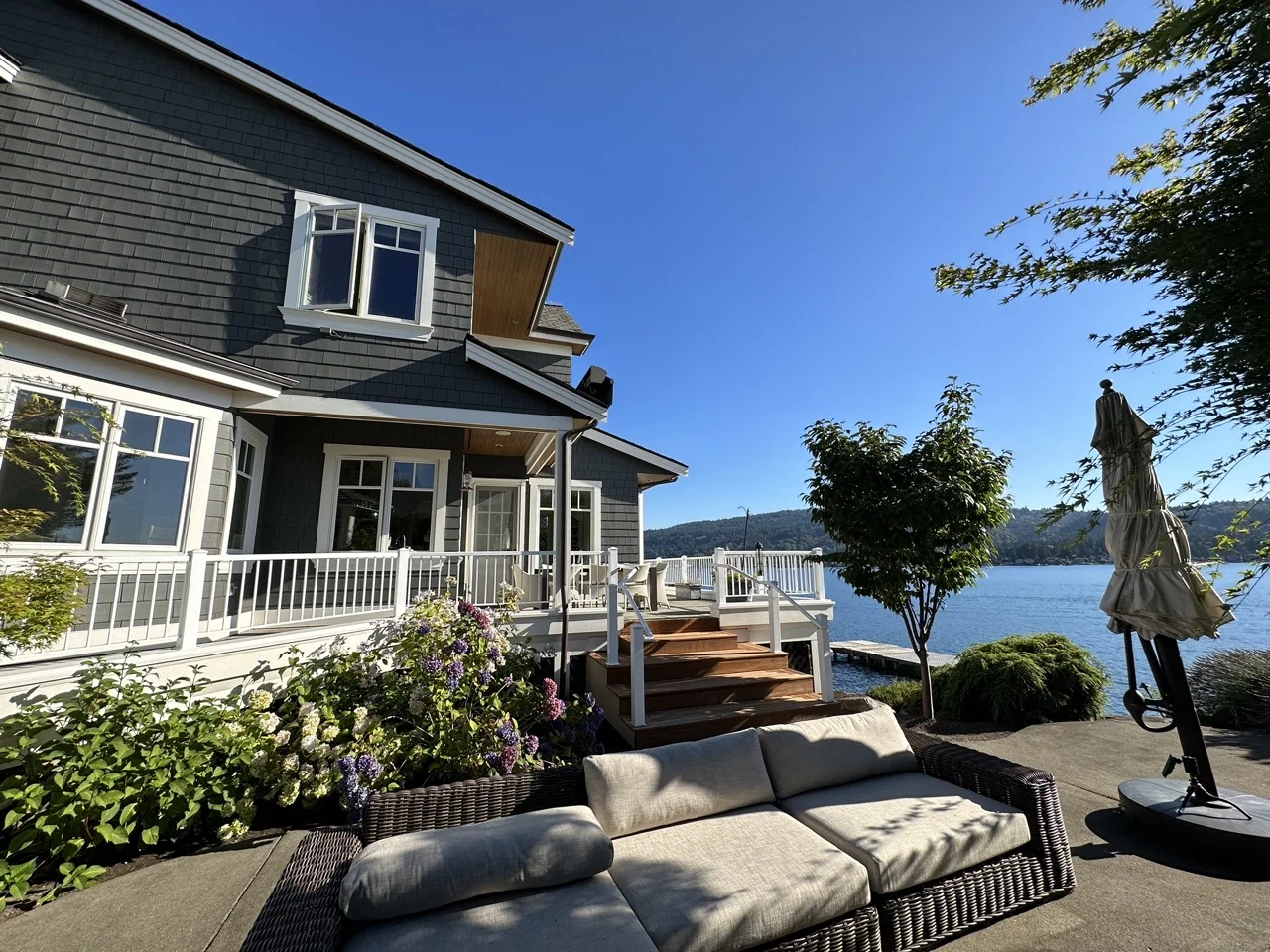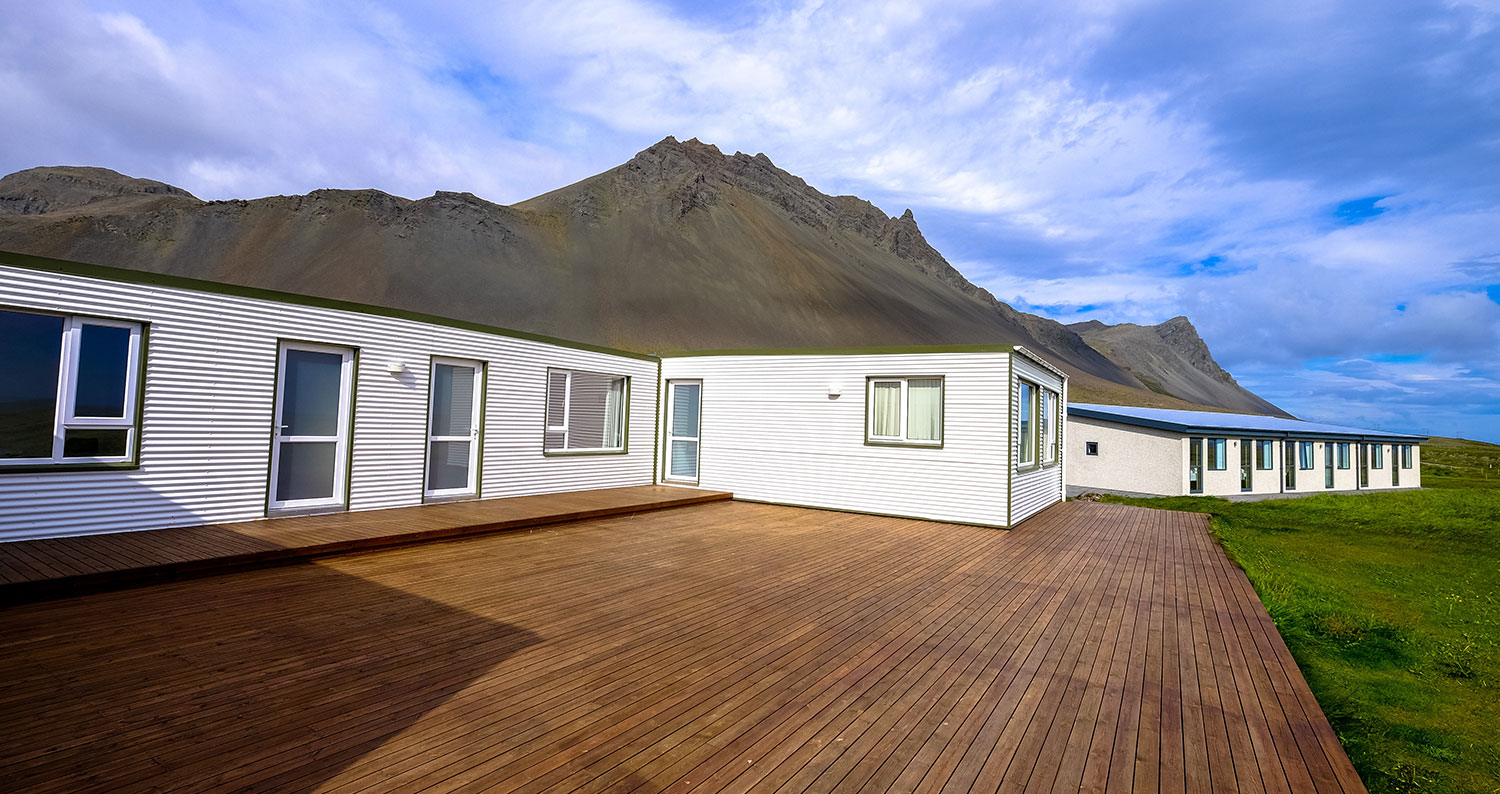
A well-designed patio can completely transform your outdoor living space. The benefits of having a comfortable and stylish patio include the following:
- Having a place to relax and spend time with family.
- Increased property value.
- A great spot for entertaining friends and guests.
- An opportunity to be closer to nature.
Planning the perfect patio requires careful consideration of factors such as size, layout, materials, and amenities.
Are you wondering how to plan a patio layout? In this article, we’ll guide you through the crucial steps of planning your dream patio and provide helpful tips for creating a stunning and functional outdoor space.
Step 1: Define Your Patio Goals and Lifestyle Needs
Before diving into the design process, consider the primary purpose of your patio. Ask yourself how you envision using the space and what your current lifestyle needs are. Will it be primarily for relaxation, dining, kids’ play, or a combination of these activities? Understanding the intended use of your patio will help inform decisions about size, layout, and features.
An important aspect to consider in your outdoor patio design plans is whether this space will be used year-round or only in the summer. If you plan to use a patio during colder months, you have to consider heating options, more durable furniture, and some roofing.
The design should reflect your lifestyle and be functional. For example, if you have a big family, you need a larger table. If you don’t spend much time at home, you may want a simple setup with only the basics. Defining your patio goals will ensure you are fully satisfied with it.
Step 2: Evaluate Space and Location
Next, assess the available space in your yard to determine the size and shape of your patio. Consider the relationship between the patio and the rest of your yard, as well as the proximity to your home. Keep in mind that the patio should be easily accessible from your home and should not impede the flow of foot traffic.
When creating an outdoor patio floor plan, you shouldn’t forget about other details, such as wind direction and sun exposure. This will allow you to create a maximum level of comfort, as you can decide which side needs more shade and enclosure.
Finally, think about the location. A standalone patio is a good option for those who have enough space in their garden and want more privacy. A patio attached to the house also has advantages, such as being able to easily carry food from home.
Step 3: Choose the Right Patio Materials
The choice of materials when designing a patio layout will impact the appearance, durability, and maintenance requirements of your outdoor space. Consider factors such as your home’s exterior, your budget, and the desired level of maintenance when selecting patio materials.
| Materials | Pros | Cons | Durability |
| Concrete | A versatile and affordable option. It can be stained, stamped, or polished for a customized look. | It can be more difficult to fix seamlessly. Concrete may look too plain without customization. | Fairly durable, but prone to cracks. |
| Pavers | Available in various materials such as concrete, brick, and natural stone. It comes in a wide range of colors, shapes, and textures. | Pavers can be expensive, depending on which ones you choose. The material requires professional installation, as it can easily shift. | Very durable. |
| Flagstone | A natural stone option that adds a rustic and elegant touch to your patio. Flagstone is non-slippery. | The installation process can be challenging. The material is fairly expensive. | Durable with proper installation. |
| Wood | A classic choice for a warm and cozy appearance. A natural material that works well in many styles. | Wood requires regular maintenance to prevent rot and weathering. | Fairly durable but vulnerable to insect infestations and rotting. |
| Brick | Brick offers a timeless look and is suitable for different styles. The material is easy to repair by replacing individual bricks. | The range of colors and shapes is limited. It can become uneven over time. | Very durable. |
| Composite decking | A durable, stylish, and eco-friendly option. It doesn’t require extensive maintenance compared to regular wood. | It can become too hot under direct sunlight. The upfront cost is higher compared to some materials. | Durable, can last up to 30 years or longer. |
Step 4: Plan the Layout and Design
Once you have determined the size and materials for your patio, it’s time to plan the layout. Consider how you will arrange furniture and amenities, and ensure there is ample space for walking and mingling.
When planning a patio design, you have to think about where the different zones will be. For instance, a dining area with built-in seats can be closer to the house, a fire pit in the middle, a kids’ play area to the side, etc. You shouldn’t forget about traffic flow when creating your plan, as there is nothing worse than not being able to move around freely.
Finally, think about what shape of the patio will work best in your case. A circular patio works well for smaller gardens and is a great one for cozy conversations. A rectangular shape is universal and is a good option if you want to add a dining table. A multi-level patio is a more complex variant, but it is great for zoning and works well for yards on a slope.
Step 5: Select Furniture and Key Amenities
Adding amenities to your patio can enhance its functionality and appeal. Consider incorporating features such as:
- Patio furniture: Keep in mind that your patio furniture should be weather-resistant and suitable for your area’s climate. You may consider chairs for the dining area, but if you plan to spend a lot of time on the patio, it’s a good idea to invest in a sofa.
- Heating and cooling features: To use a patio in colder months, you can install a fire pit. If you don’t want to deal with an open fire, a good option is infrared heaters. As for the hot weather, placing a misting system along your patio, as well as fans, can help you handle the heat.
- Lighting: Incorporate a mix of ambient, task, and accent lighting to create a welcoming and well-lit patio space.
- Shade structures: Pergolas, umbrellas, or retractable awnings can provide shade and protection from the elements.
- Bonus features: Equipped with a grill, sink, refrigerator, and countertop space, an outdoor kitchen allows you to cook and entertain in style. A focal point for gathering and socializing, a fire pit or fireplace can provide warmth and ambiance on cool evenings.
Step 6: Integrate Landscaping and Privacy Elements
Incorporating landscaping elements around your patio can enhance its visual appeal and create a sense of privacy. Consider planting a mix of trees, shrubs, and flowers that complement the style of your patio and home. You can also install privacy screens, trellises, or fences to create a secluded oasis.
Also, proper terrace lighting can elevate your patio to the next level. You can play around with solar lights to make your garden look magical at night without the additional expenses.
Step 7: Patio Maintenance and Longevity
It’s one thing to create elaborate outdoor patio building plans, but you should keep in mind that you will need to maintain your space to make it last.
Seasonal cleaning is a must to both maintain the appearance and ensure you remove any insects, stains, and debris that can affect the materials. Make sure you pick the right cleaning tools depending on what your patio is made of. Once every few years, you may have to apply a sealant on your floors to protect them.
To protect furniture and equipment, you should invest in covers. In severe weather conditions, even weather-resistant materials need additional protection.
If you want a lush garden patio, you should think about adding drainage and irrigation solutions. As for lighting, make sure to regularly wipe any fixtures and use a suitable detergent.
Step 8: Budgeting and Project Planning
Choosing a design for an outdoor patio also involves cost consideration. A significant expense is materials, and the prices vary significantly depending on what you choose. Decorations and furniture also increase expenses, but you don’t have to buy everything at once. It’s a good idea to plan your budget and decide what purchases are crucial and what you can purchase over time.
As for labor, it’s possible to save money by doing some work on your own, such as building a table or covering the ground with gravel. However, if you are not a specialist, you should hire professionals for any complex work, such as wiring, flooring installation, roofing, and so on, to minimize the risks.
Honeycomb Construction: Your Trusted Partner in Outdoor Patio Planning
How successfully you plan a convenient and stylish outdoor patio layout will determine how much time you will want to spend in this space. At Honeycomb Constructions, our goal is to help turn your ideas into an outdoor space that will fully reflect your lifestyle and design preferences.
As a premier construction company from Renton, WA, we have completed more than 250 remodeling projects of varying complexity. Our professional team has years of experience in deck building, painting, flooring, and house remodeling, so you can trust our expertise. Our Honeycomb Constructions team prioritizes craftsmanship, sticks to deadlines, and has all the regulatory safety certificates.
FAQ
continue reading
Related Posts
In this article, we’ll guide you through the process of staining your deck and provide helpful tips to ensure a successful outcome.

